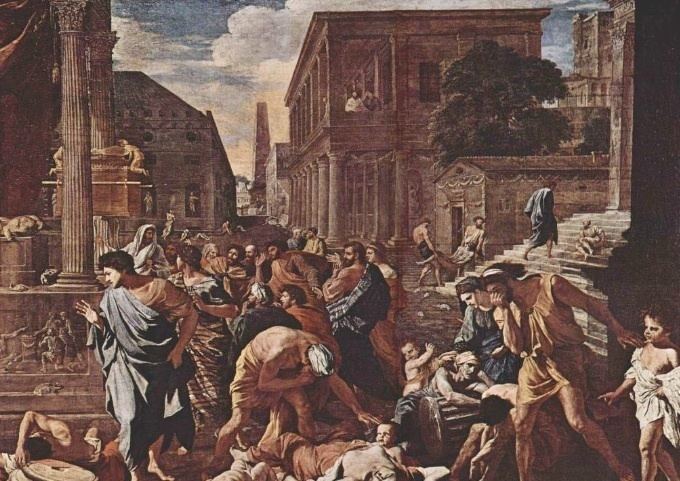 | ||
Similar Plague of Justinian, Plague of Athens, Plague of Cyprian, Third plague pandemic, Great Plague of Marseille | ||
The Antonine Plague of 165–180 AD, also known as the Plague of Galen (from the name of the Greek physician living in the Roman Empire who described it), was an ancient pandemic brought back to the Roman Empire by troops returning from campaigns in the Near East. Scholars have suspected it to have been either smallpox or measles, but the true cause remains undetermined. The epidemic may have claimed the life of a Roman emperor, Lucius Verus, who died in 169 and was the co-regent of Marcus Aurelius Antoninus, whose family name, Antoninus, has become associated with the epidemic. The disease broke out again nine years later, according to the Roman historian Dio Cassius (155–235), causing up to 2,000 deaths a day in Rome, one quarter of those who were affected, giving the disease a mortality rate of about 25%. The total deaths have been estimated at five million, and the disease killed as much as one-third of the population in some areas and devastated the Roman army.
Contents
- Decrypting revelation 13 0 antonine plague
- Epidemiology
- Culture literature the arts
- Military concerns
- Indian Ocean trade and Han China
- References
Ancient sources agree that the epidemic appeared first during the Roman siege of Seleucia in the winter of 165–166. Ammianus Marcellinus reports that the plague spread to Gaul and to the legions along the Rhine. Eutropius asserts that a large population died throughout the Empire.
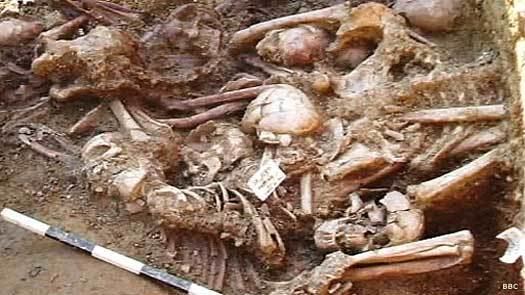
Rafe de Crespigny speculates that the plague may have also broken out in Eastern Han China before 166, given notices of plagues in Chinese records. The plague had an impact on Roman culture and literature, and may have severely affected Indo-Roman trade relations in the Indian Ocean.
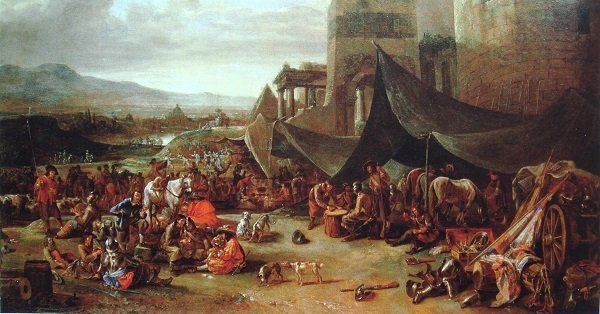
Decrypting revelation 13 0 antonine plague
Epidemiology
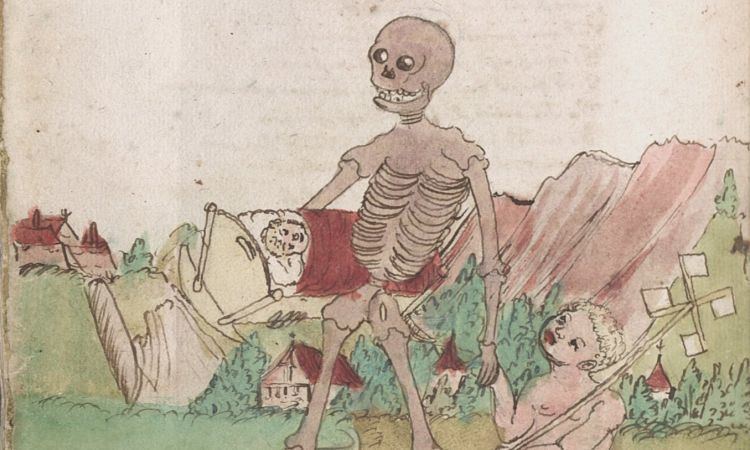
In 166, during the epidemic, the Greek physician and writer Galen traveled from Rome to his home in Asia Minor. He returned to Rome in 168 when summoned by the two Augusti; he was present at the outbreak among troops stationed at Aquileia in the winter of 168/69. Galen briefly records observations and a description of the epidemic in the treatise Methodus Medendi, and his other references to it are scattered among his voluminous writings. He describes the plague as "great" and of long duration and mentions fever, diarrhea, and pharyngitis, as well as a skin eruption, sometimes dry and sometimes pustular, appearing on the ninth day of the illness. The information provided by Galen does not clearly define the nature of the disease, but scholars have generally preferred to diagnose it as smallpox.
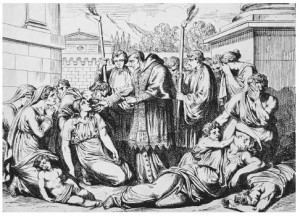
Historian William McNeill asserts that the Antonine Plague and the later Plague of Cyprian (251–ca. 270) were outbreaks of two different diseases, one of smallpox and one of measles, not necessarily in that order. The severe devastation to the European population from the two plagues may indicate that people had no previous exposure to either disease, which brought immunity to survivors. Other historians believe that both outbreaks involved smallpox. The latter view seems more likely to be correct given that molecular estimates place the evolution of measles sometime after 500 AD.
Culture, literature, the arts
In their consternation, many turned to the protection offered by magic. Lucian of Samosata's irony-laden account of the charlatan Alexander records a verse of his "which he despatched to all the nations during the pestilence... was to be seen written over doorways everywhere", particularly in the houses that were emptied, Lucian further remarks.
The epidemic had drastic social and political effects throughout the Roman Empire: Barthold Georg Niebuhr (1776–1831) concluded that "as the reign of Marcus Aurelius forms a turning point in so many things, and above all in literature and art, I have no doubt that this crisis was brought about by that plague.... The ancient world never recovered from the blow inflicted on it by the plague which visited it in the reign of Marcus Aurelius." During the Marcomannic Wars, Marcus Aurelius wrote his philosophical work 'Meditations'. Passage IX.2 states that even the pestilence around him is less deadly than falsehood, evil behavior, and lack of true understanding. As he lay dying, Marcus uttered the words, "Weep not for me; think rather of the pestilence and the deaths of so many others." Edward Gibbon (1737–1794) and Michael Rostovtzeff (1870–1952) assign the Antonine plague less influence than contemporary political and economic trends, respectively.
Military concerns
Some direct effects of the contagion stand out, however. When Imperial forces moved east under the command of Emperor Verus after the forces of Vologases IV of Parthia attacked Armenia, the Romans' defense of the eastern territories was hampered when large numbers of troops succumbed to the disease. According to the 5th-century Spanish writer Paulus Orosius, many towns and villages in the Italian Peninsula and the European provinces lost all their inhabitants. As the disease swept north to the Rhine, it also infected Germanic and Gallic peoples outside the Empire's borders. For a number of years, those northern groups had pressed south in search of more lands to sustain their growing populations. With their ranks thinned by the epidemic, Roman armies were now unable to push the tribes back. From 167 to his death, Marcus Aurelius personally commanded legions near the Danube, trying, with only partial success, to control the advance of Germanic peoples across the river. A major offensive against the Marcomanni was postponed until 169 because of a shortage of Imperial troops.
Indian Ocean trade and Han China
Although Ge Hong was the first in China to accurately describe the symptoms of smallpox, historian Rafe de Crespigny muses that the plagues afflicting the Eastern Han empire of China during the reigns of Emperor Huan of Han (r. 146-168) and Emperor Ling of Han (r. 168–189) - with outbreaks in 151, 161, 171, 173, 179, 182, and 185 - were perhaps connected to the Antonine plague on the western end of Eurasia. Crespigny suggests that these plagues led to the rise of the cult faith healing millenarian movement led by Zhang Jue (d. 184), who instigated the disastrous Yellow Turban Rebellion (184-205). He also states that "it may be only chance" that the outbreak of the Antonine plague in 166 coincides with the Roman embassy of "Daqin" (i.e. the Roman Empire) landing in Jiaozhi (northern Vietnam) and visiting the Han court of Emperor Huan, claiming to represent "Andun" (安敦; a transliteration of Marcus Aurelius Antoninus or his predecessor Antoninus Pius).
Raoul McLuaghlin writes that this event of Roman subjects visiting the Han Chinese court in 166 could have ushered in a new era of Roman Far East trade, yet it was a "harbinger of something much more ominous" instead. McLaughlin surmises that the origins of the plague lay in Central Asia, from some unknown and isolated population group, which then spread to the Chinese and Roman worlds. The plague would kill roughly 10% of the Roman population, as cited by McLaughlin, causing "irreparable" damage to the Roman maritime trade in the Indian Ocean as proven by the archaeological record spanning from Egypt to India, as well as significantly decreased Roman commercial activity in Southeast Asia. However, as evidenced by the 3rd-century Periplus of the Erythraean Sea and the 6th-century Christian Topography by Cosmas Indicopleustes, Roman maritime trade into the Indian Ocean, particularly the silk and spice trade, certainly did not cease and continued up until the loss of Egypt to the Rashidun Caliphate. Chinese histories also insist that further Roman embassies came to China by way of Rinan in Vietnam in 226 and 284 AD, where Roman artefacts have been found.
